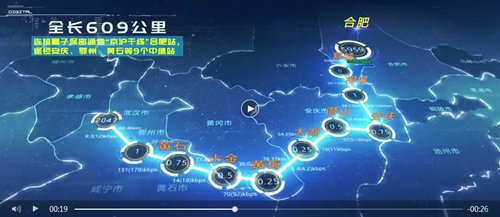It is bound to happened sooner or latter There is no respect for STEM education in the west and media instead they glorified actor, sport jock, movie star,reality TV, 6 pack ab. What do you expect via Haidan. There are roughly 4 million STEM graduate in China every year and only 600,000 in US mostly 1/3rd Asian too BTW
Numbers of science papers and numbers of international students suggest this may be the beginning of the end of the American century.
China surpasses U.S. in science papers
- John Richard Schrock Emporia
- Oct 22, 2018
China has surpassed the U.S. in the number of articles in science journals. This is not unexpected; Chinese authorship was on a sharp upward slope while U.S. authorship has declined slightly each year.
According to a just-released report in Learned Publishing that analyzed numbers from our National Science Board, U.S. scientists published 409,000 science, technology and medical papers last year while China published 426,000. This takeover has been swift and China’s momentum will rapidly leave the U.S. behind, the analysis indicated, since the “number of science and engineering articles in all fields from China increased nearly fivefold from 2003 to 2016.”
Nature Index counts the number of authors by country in Science and Nature, and we are only a few years away from China overtaking the U.S. in authorship in these premier international journals.
While Chinese university professors are the lowest paid among the developed nations, they receive additional payment for additional duties, from presiding over final graduate defenses to publishing papers in prestigious journals. And a paper accepted in Science or Nature can earn a Chinese professor an extra one million Chinese yuan bonus, about US $150,000.
China also supercharged its new faculty with overseas training. In their top tier universities, to achieve rank of professor requires that they have studied somewhere in the West — Australia, New Zealand, Europe, the United States — for a year. When they return having learned state-of-the-art research techniques, many are then provided with state-of-the-art research equipment. This long-term policy and investment in education and people has paid off in accelerating science advancements in China. Simply,
the U.S. spends huge amounts on military and relatively less on education and research. China has done the complete opposite.
When Deng Xiao-ping opened up China in the 1980s, he made English the second language for students to study, due to its predominance in trade and science. It took a long time for China to build English capacity, with English starting in elementary schools across the country. And English has been a major part of the high school exit test that determines who goes to college. This bilingual policy is now paying off with young Chinese scientists reading and publishing research in English.
China still has a way to go. It remains second to the U.S. in R&D (research and development) spending according to the latest issue of Science, at $254 billion or a 12.3 percent increase over the prior year. In 2012, China’s R&D level was 34 percent of the U.S. R&D. But by 2016, based on “purchasing power parity,” China’s R&D spending was equivalent to 88 percent of U.S. spending and will likely surpass the U.S. soon. China’s budget for basic research hit US $14.1 billion, up 18.5 percent over the prior year.
It has also helped that the United States has failed to move ahead in many areas of science, from particle accelerators to astronomy to organismic biology. Two years ago I watched in the insect museum here in west-central China as new insect cabinets and drawers were brought in, a 56 percent increase in museum capacity. At this very same time, the U.S. N.S.F. had placed a moratorium on American museum funding nationwide for a half year. Today, specialists from the British Museum and Illinois Natural History Survey come to the museum here in China that now houses the world’s leading collections for several major groups of insects. Meanwhile, the number of entomology departments in the U.S. today has dropped to barely half the number 20 years ago.
When it comes to number of active researchers, China is second in the world after the European Union. (The U.S. is third.)
According to a report in University World News, the “European Commission is ‘keeping a very close eye on China,’ particularly in the area of innovation....” The EU “realises it [the EU] has a performance lead, but that is decreasing very rapidly because China has improved seven times faster than the EU” in performance indicators.
Asian international students — currently there are over 350,000 currently attending U.S. universities — generate a substantial revenue flow to the U.S. America also relies on some Asian graduates staying to fill our vacancies in engineering, physics and chemistry where there is a shortage due to our very low K - 12 science education requirements.
Students here in China watch the news and several have already asked me whether they will still be welcomed in America. Anything positive I can offer would soon be drowned out by another tweet from the White House. We are already seeing the beginning of a downturn in international students coming to the U.S., as they divert to Australia, Canada and other friendlier countries.
Numbers of science papers and numbers of international students suggest this may be the beginning of the end of the American century.





